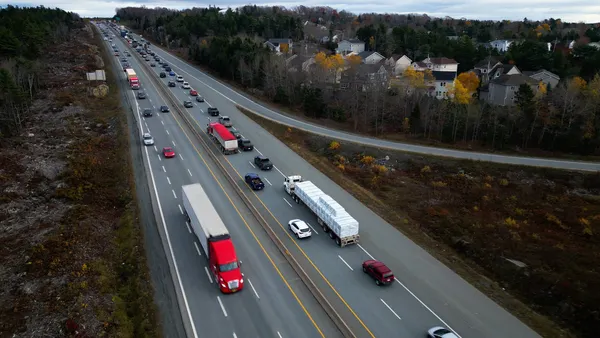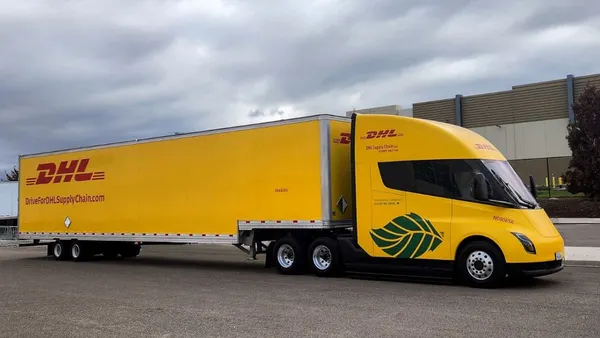Inbound logistics is often the unsung hero of the supply chain. It sets the stage for everything that follows, yet it’s also where many supply chains begin to fray. Containers get stuck at ports, warehouses hit capacity, drayage partners run late—and suddenly costs mount while customers wait.
The solution? Increasing velocity to market by eliminating unnecessary handoffs and working with partners who can keep freight moving continuously from port to customer.
Too many hands, too many headaches
As Ed Smith, Averitt’s Vice President of Distribution & Fulfillment, explains: “Gaps mean fear. If you start piecemealing those links together, that’s where the armor weakens. Communication gaps, visibility gaps—that’s what slows you down.”
Traditional inbound models rely on a patchwork of disconnected providers—one for drayage services, another for warehousing services, another for inland transport. Each handoff adds risk, cost, and delay. By consolidating under a partner with integrated port access, warehousing, and trucking capacity, shippers can close those gaps and move freight faster.
Driving velocity and cost savings — DiversiTech
DiversiTech, a leading HVAC supplier, faced these challenges head-on at the Port of Savannah. Previously, its logistics provider brokered drayage out to multiple carriers moving floor‑loaded containers directly to the company’s distribution center outside of Atlanta. The sheer volume became a problem because DiversiTech didn’t have the capacity to unload, palletize, and store the freight quickly. As containers backed up, the company incurred hundreds of thousands of dollars in driver- and port-related fees.
Matt Krause, COO of DiversiTech, noted that high volumes made it difficult to stay in control of containers and avoid costly charges. The company needed new partners who could help them focus more on serving customers than chasing freight at the port.
The shift came when DiversiTech partnered with Averitt. Instead of juggling multiple drayage providers, Averitt drays containers to its own Savannah Distribution & Fulfillment Center, unloads and palletizes the cargo, and turns containers back within the same day—eliminating demurrage and per diem costs. From there, the palletized freight is transloaded into Averitt’s own LTL and truckload network for delivery to DiversiTech’s distribution center.
Krause explained that the new model eliminated uncertainty and “took out 100% of our delay and merge costs.” Today, DiversiTech reports zero demurrage or detention costs and greater flexibility to align inbound flows with warehouse capacity. “The site in Savannah has been a real competitive advantage for us,” he added.
Watch the full interview with DiversiTech COO Matt Krause to hear how his team eliminated costly fees and increased velocity.
From port to inventory, without the middlemen
This is the essence of maximizing supply chain velocity: fewer handoffs, more control. By integrating port drayage, transloading, warehousing, and inland distribution under one umbrella, shippers can move cargo continuously rather than in stop-and-start segments.
Averitt’s network of Distribution & Fulfillment Centers, including PortSide® facilities positioned by major seaports, provide immediate access to chassis and in-house drayage drivers. Inventory is staged and tracked through WMS integration, and inland delivery leverages Averitt’s own less-than-truckload and truckload shipping fleets. The result: faster speed to market, greater visibility, and fewer surprises.
Why velocity matters now
Supply chain velocity isn’t just about moving fast. It’s about resilience, flexibility, and competitiveness. Shippers that accelerate their inbound flow see measurable benefits:
- Lower costs – Avoid demurrage fees and duplicate handling.
- Stronger cash flow – Faster shelf placement improves inventory turns.
- Scalability – Adjust inbound volume with seasonal demand.
- Customer satisfaction – Reliable delivery windows strengthen loyalty.
And in a market still defined by supply chain disruptions, velocity is becoming a true benchmark for success.
The path forward
From DiversiTech’s HVAC components to consumer products and retail goods, the lesson is consistent: fewer handoffs mean faster freight, better visibility, and lower costs.
Krause summed it up simply: “We see zero (driver- and port-related fees) since we’ve partnered with Averitt, which I think is just a great testament to their customer service...”
For today’s shippers, that’s the new standard. Velocity to market isn’t optional—it’s a competitive edge.
Ready to increase your supply chain velocity? Connect with Averitt for a personalized consultation.










